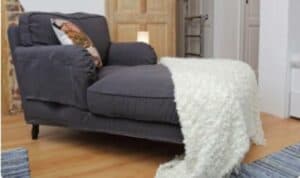
Wooden furniture adds warmth, beauty, and timeless elegance to any home. Whether it’s a cherished family heirloom or a brand new piece, proper care and cleaning is essential to maintain the luster and integrity of the wood. However, with so many products and methods out there, it can be confusing to know the best way to clean your wooden furniture without causing damage.
In this article, we’ll guide you through the dos and don’ts of deep cleaning wooden furniture. You’ll learn the safest and most effective methods to dust, clean, and polish various wood finishes. We’ll also share tips on how to remove stubborn stains, water marks and sticky residue without harming the surface.
With our expert advice, you’ll be able to clean your wooden furniture quickly and safely, restoring its natural beauty and protecting it for years to come. So let’s dive in and discover the best ways to care for all the wooden pieces in your home, whether it’s your dining table, coffee table, chairs, or cabinets.
Pre-Cleaning Assessment
Before wiping down your furniture, carry out a pre-cleaning assessment:
- Identify the Finish: Use this information to select appropriate cleaning methods.
- Check for any Labels: Manufacturers may provide care instructions specific to the piece.
- Inspect for Damage: Look for cracks, peeling, or wear that could be exacerbated by cleaning.
- Test in an Inconspicuous Spot: Try your cleaning method on a small, hidden area to ensure it doesn’t cause harm.
Types of Wood and Finishes
Before diving into cleaning techniques, it is good to know what type of wood and finish is your furniture. This can help you decide the cleaning approach and a pre-cleaning assessment can also assist you to avoid potential damage.
Different woods and finishes require unique care. Here’s a breakdown to help you understand what you might be dealing with.
Type of wood
- Oak: Belongs to solid wood which has a prominent wood grain. It has the color of red, brown, or light beige, which is easy to be damaged by water if you do not seal it well.
- Maple: Also belongs to solid wood. Same as Oak, it is prone to have water stains if you do not dry it carefully.
- Walnut: Walnut has a dark color and fine grain. This kind of wood is easy to get scratches and dents.
- Pine: Pine wood is sensitive. If you clean it with rough materials, it will be prone to getting scratches.
- Teak: Teak always has a golden appearance. After cleaning the teak furniture, you should use oil to maintain it. If not, it will develop a silvery patina.
- Mahogany: Mahogany is easy to wrap due to the humid environment.
Type of wood finish and The Best Way to Clean

| Finish Type | Cleaning Method | Protection | Suitability | Application |
|---|---|---|---|---|
| Varnishes | Dust with soft cloth, damp cloth with mild soap for deeper cleaning. Avoid polishes/waxes. | Excellent protection against moisture, scratches, wear. Contains UV inhibitors for outdoor use. | Indoor and outdoor use. Suitable for furniture and floors. | Brush, spray or roller application. Forms a hard, transparent protective film on wood surface. |
| Polyurethanes | Wipe with damp cloth using mild soap/water or natural cleaner. Avoid alcohol/ammonia cleaners. Use mineral spirits for tough stains. | Superior scratch and water resistance. Forms a hard, plastic-like coating. | Low-maintenance. Popular for indoor wood flooring and furniture. | Available in oil-based and water-based formulations. Brush or spray application. |
| Lacquers | Dust regularly with soft cloth/duster. Occasionally clean with damp cloth and mild soap. Avoid waxes, polishes, abrasives. | Create a hard, durable protective film on wood surface. | Fast-drying. Suitable for furniture and decorative pieces. High-gloss or matte finish. | Solvent-based or water-based. Usually sprayed on. |
| Shellac | Dust with soft dry cloth. Slightly damp cloth occasionally if needed. Avoid water, alcohol, ammonia cleaners. | Dries quickly to a hard, strong film. Not very water or alcohol resistant. | Suitable for floors and fine furniture. Provides a warm amber tone. | Natural resin mixed with alcohol. Brush application. |
| Stains | Wipe with soft damp cloth using water or mild soap. Dry immediately. Use mineral spirits for oil-based stains. | Penetrate wood to enhance grain and color. Provide some moisture protection. | Wide range of colors. Used to change wood color and highlight grain. | Oil-based or water-based. Brush, rag or spray application. |
| Paints | Dust regularly with soft cloth/duster. Clean with damp cloth and mild soap/water as needed. Avoid abrasives and excess moisture. | Completely cover and seal wood surface. Provide moisture protection. | Available in any color. Used for indoor/outdoor wood surfaces – furniture, walls, fences, etc. | Brush, roller or spray application. Opaque finish hides wood grain. |
| Oil Finishes (Tung, Linseed, Danish Oil) | Wipe with damp cloth using mild soap/water or natural cleaner. Avoid alcohol/ammonia. Use mineral spirits for stubborn dirt. | Penetrate wood for natural low-sheen look. Enhance grain. Good moisture protection. | Suitable for indoor and outdoor wood. Easy to apply and maintain. | Applied with brush or cloth. Tung oil most durable for outdoor use. Linseed and Danish oil more for indoor. |
Routine Cleaning and Dusting
Keeping your wooden furniture clean and dust-free not only maintains its sheen but also ensures its longevity. For best results, incorporate weekly dusting into your routine and use safe cleaning solutions that will not damage the wood.
The Best Way to Clean Dust
Weekly Dusting:
- Choose the Proper Tool: Prepare some basic tools like a spray bottle or clean cloth. Begin by using a damp microfiber cloth or a feather duster to effectively trap and remove dust without scratching the furniture’s surface.
- Method: Lightly glide the duster across the surfaces. If you’re using a microfiber cloth, remember to occasionally shake it out to prevent dust resettlement.
Avoid Harmful Tools:
- Never use rough materials that can scratch, like paper towels.
- Avoid dry dusting with anything that might scratch the wood.
Regular Cleaning Solutions
Safe Cleaning Products:
When a simple dusting isn’t enough, use a gentle cleaning solution:
- Mix warm water with a few drops of dish soap. Use a soft microfiber cloth into this mixture, wring it out thoroughly to ensure it’s only damp, not wet, and wipe the wood surfaces.
- Furniture polish or wax can be used after cleaning for added shine.
Do’s and Don’ts:
- Do: Test any cleaner on an inconspicuous area first.
- Don’t: Saturate your furniture with water or any cleaner, as too much moisture can damage the wood.
Regularly dusting and correctly cleaning your wooden furniture are key steps in maintenance. With the right tools and solutions, you’ll keep your furniture looking pristine for years to come.
Addressing Spills and Stains

When it comes to your cherished wood furniture, spills and stains can happen, but prompt and appropriate action can make all the difference in preserving its beauty.
Immediate Actions for Spills
When you encounter a spill, time is of the essence. First, blot—don’t rub—the excess liquid as swiftly as possible using a clean, absorbent cloth or paper towel. Press down on the spill to absorb as much as you can. Remember, allowing water or other liquids to sit can lead to water damage including swelling and staining. For oil-based spills, a light application of cornstarch can help absorb the oil before it settles.
Removing Stains and Water Rings
To remove stains from your wood furniture, especially water stains or rings, follow these steps:
- Create a cleaning mixture with a few drops of dish soap and warm water. Dampen a microfiber cloth in the solution and wring it until merely damp to the touch.
- Gently wipe the affected area, moving in the direction of the wood grain to avoid cross-grain scratches. Be careful not to saturate the wood.
Baking soda can be particularly effective against stubborn stains. Make a paste with baking soda and water, and gently rub it onto the stain in a circular motion. Then, wipe clean with a soft, damp cloth and dry thoroughly after.
For persistent water stains:
- Mix a solution of equal parts white vinegar and water, or use non-gel toothpaste.
- Apply the solution directly onto the water stain.
- Rub gently with a soft cloth until the stain is lifted.
- Clean the area with the previously mentioned dish soap mixture to remove any residue.
Deep-Cleaning Practices
When your wooden furniture requires more than just a surface wipe-down, deep-cleaning practices like stripping and refinishing or tackling sticky residue and grime become necessary. Here’s how you can restore your furniture’s beauty and longevity.
Stripping and Refinishing
To truly rejuvenate your wood furniture, you may need to strip and refinish the surface, especially if it has a lacquered or varnished finish that’s seen better days.
- Stripping: Apply a cleaning solution specifically designed for stripping furniture. Look for a product that contains mineral spirits or denatured alcohol, which are effective in removing old finishes without damaging the wood.
- Use a paintbrush to apply the stripper.
- Allow it to sit as per the product’s instructions.
- Scrape away the old finish with a putty knife.
- Refinishing: After stripping, the wood will be ready for refinishing.
- Sand the furniture lightly with a fine-grit sandpaper.
- Wipe away the dust with a tack cloth.
- Apply a new finish, like varnish or lacquer, with a clean brush.
Dealing with Sticky Residue and Grime
Sticky spots and built-up grime on wooden furniture require a gentle but effective approach to avoid damaging the wood.
- Cleaning Sticky Residue: Mix a solution of mild dish soap and warm water.
- Dampen a soft cloth in the soapy water.
- Gently rub the areas with residue until clean.
- Rinse the cloth with clean water and wipe the surface to remove any soap residue.
- Tackling Grime: If you’re faced with more ingrained grime or substances like mold or mildew, it’s best to use a specialized wood cleaner.
- Apply the cleaner to a soft cloth.
- Rub the area gently until the grime lifts away.
- Avoid soaking the wood as this can cause damage.
Protecting and Preserving Your Furniture

To maintain the beauty and longevity of your furniture, regular moisturizing and polishing, paired with strategies to prevent common damages, are essential.
Moisturizing and Polishing
Your wooden furniture requires moisturizing to prevent drying out, which can lead to cracks. A well-chosen furniture wax can serve both as a protectant and revitalizer. There are two main types:
- Paste wax is durable and ideal for less frequently used items.
- Liquid wax is easier to apply but may need more frequent use.
Apply a thin layer of your chosen wax with a soft cloth. This not only moisturizes the wood but can also give it a fresh, shiny appearance, enhancing its natural beauty without the use of harsh chemicals. Inbetween waxings, consider using olive oil as a natural alternative for quick touch-ups, helping to maintain the wood’s suppleness.
Preventing Common Damage
To safeguard your furniture against common forms of damage:
- Avoid Direct Sunlight: Prolonged exposure can cause fading and warping. Position your furniture away from windows or use curtains to mitigate the sun’s impact.
- Prevent Scratches: Use felt pads under decorative items and avoid dragging objects across the surface.
- Deal with Spills Quickly: Blot spills immediately with a soft cloth to prevent staining or water rings.
If you do encounter a water ring or minor scratch, a little toothpaste (non-gel) might buff out the blemish without abrasive harm. Rub gently, and then wipe off with a damp cloth to not leave any residue. Remember, always treat your furniture gently to maintain its pristine condition.
Frequently Asked Questions
Can I use vinegar to clean my wooden furniture safely?
Yes, you can use vinegar safely on wooden furniture. Mix equal parts of vinegar and water, dip a soft cloth into the solution, and wring it out well. Gently wipe the surface, but avoid over-saturating the wood. Follow up with a dry cloth to remove any moisture.
What are some effective home remedies for cleaning wood furniture?
Home remedies can be useful for cleaning wood furniture. For water rings, rub non-gel toothpaste on the spot with a soft cloth. For nourishing the wood, olive oil or mayonnaise can be applied, left for an hour, and then buffed away.
Is Murphy’s oil soap effective for maintaining wood furniture?
Murphy’s oil soap is often recommended for maintaining wood furniture because it cleans and conditions the wood. It’s gentle enough for regular use and helps keep wood hydrated, which can prevent it from drying out and cracking.






